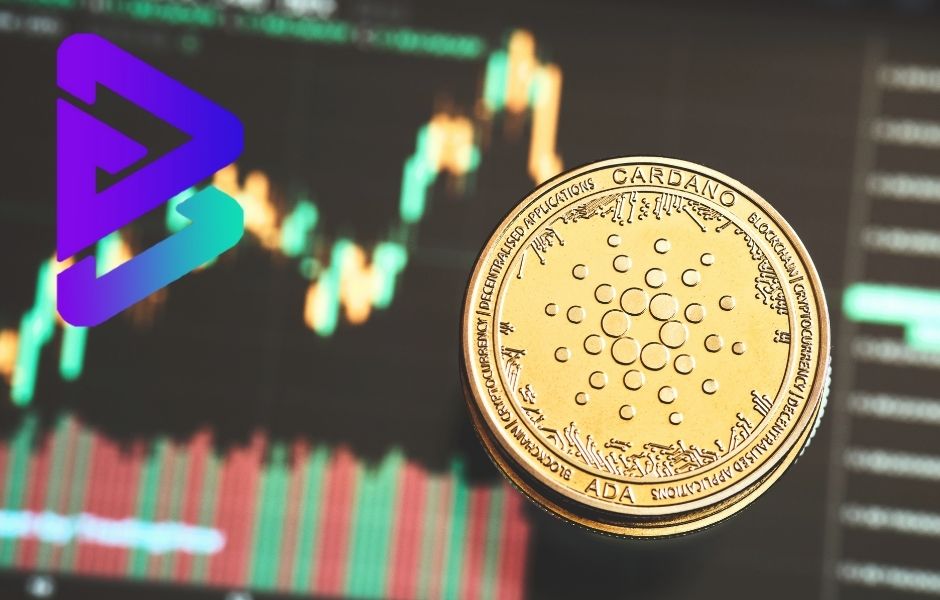Yield Farming in DeFi: Best Strategies and Risks for 2024
Yield farming has become a popular way for investors in decentralized finance (DeFi) to earn returns on their cryptocurrency holdings. This method allows users to generate passive income by participating in various financial activities within the DeFi ecosystem. However, while it offers exciting opportunities, it also comes with its share of risks and challenges. In this article, we will explore the different strategies, potential rewards, and the risks involved in yield farming as we look ahead to 2024.
Key Takeaways
- Yield farming allows users to earn passive income by locking up cryptocurrencies in various DeFi platforms.
- Investors can choose from strategies like liquidity pools, staking, and lending to maximize their returns.
- While the potential for high returns exists, yield farming also carries significant risks, including market volatility and smart contract vulnerabilities.
- Understanding key terms and strategies is crucial for anyone looking to start yield farming.
- As the DeFi landscape evolves, staying informed about new trends and regulatory challenges will be important for successful yield farming.
Understanding Yield Farming
Definition and Basic Concepts
Yield farming is a way for people to earn money using their cryptocurrencies. It involves putting your crypto into a special pool on a platform, which helps others trade or borrow. In return, you get rewards, often in the form of more tokens. This method is popular in the DeFi world.
How Yield Farming Works
To start yield farming, you need to:
- Choose a platform that offers yield farming.
- Deposit your cryptocurrency into a liquidity pool.
- Earn rewards based on how much and how long you keep your crypto there.
This process can be complex, but it allows you to earn passive income from your digital assets.
Key Terminologies in Yield Farming
Here are some important terms to know:
- Liquidity Pool: A collection of funds that helps facilitate trading on a platform.
- Staking: Locking up your crypto to earn rewards.
- APY (Annual Percentage Yield): The rate of return on your investment over a year.
| Term | Definition |
|---|---|
| Liquidity Pool | A pool of funds for trading |
| Staking | Locking crypto for rewards |
| APY | Yearly return rate |
Yield farming can be a great way to earn, but it also comes with risks like volatility and market risks. Always do your research before diving in!
Popular Yield Farming Strategies
Liquidity Pools
Liquidity pools are one of the most common ways to engage in yield farming. In this method, users deposit pairs of tokens into a pool on decentralized exchanges (DEXs) like Uniswap or PancakeSwap. These tokens are then used for trading, and liquidity providers earn a portion of the transaction fees. This strategy is straightforward and can yield good returns.
Staking
Staking involves locking up your tokens in a specific protocol to support its operations, such as validating transactions. In return, stakers earn rewards, often in the form of additional tokens. This method is generally less risky than others, making it a popular choice for beginners. Here are some key points about staking:
- Lower risk compared to other strategies.
- Fixed rewards based on the amount staked.
- Often requires a minimum amount to participate.
Lending and Borrowing
In this strategy, users lend their cryptocurrencies to others through a DeFi platform. In return, they earn interest on the amount lent. Conversely, users can also borrow assets by providing collateral. This method can be more complex but offers flexibility. Here’s a quick overview:
- Lend your assets to earn interest.
- Borrow assets by providing collateral.
- Monitor interest rates to maximize returns.
Yield farming can be a great way to earn passive income, but it’s essential to understand the methods and risks involved.
In summary, each yield farming strategy has its own benefits and risks. By understanding these methods, you can make informed decisions and potentially increase your returns in the DeFi space. Remember, knowledge is key to successful yield farming!
Benefits of Yield Farming
Yield farming has become a popular way for investors to earn rewards in the world of cryptocurrencies. Here are some key benefits:
High Return Potential
Yield farming is known for its high return potential. By placing assets in liquidity pools, users can earn rewards in the form of extra tokens. These rewards often depend on how much and how long the assets are locked in. This can lead to returns that are much higher than traditional investments.
| Investment Type | Average Return |
|---|---|
| Traditional Savings | 0.5% – 2% |
| Yield Farming | 5% – 20%+ |
Contribution to Market Liquidity
Another benefit is the contribution to market liquidity. When users deposit their assets, they help make transactions smoother on decentralized exchanges (DEX). This liquidity is essential for keeping prices stable and transactions fast. By participating, users support the growth of the DeFi ecosystem.
Incentives for Users and Liquidity Providers
Yield farming also provides incentives for users and liquidity providers. Participants often receive governance tokens, which allow them to have a say in the future of the projects they support. This not only rewards users financially but also gives them a sense of belonging and influence in the community.
Yield farming offers users the opportunity to earn potentially higher yields compared to traditional financial instruments.
In summary, yield farming presents several advantages, making it an attractive option for those looking to maximize their returns in the DeFi space.
Risks Associated with Yield Farming
Yield farming can be a great way to earn returns, but it also comes with significant risks that investors need to understand. Here are some of the main risks:
Volatility and Market Risks
- The cryptocurrency market is known for its high volatility. Rapid price changes can affect the value of assets in liquidity pools, leading to potential losses.
- Investors should be aware of impermanent loss, which occurs when the value of deposited assets changes compared to holding them individually.
- Staying informed about market trends can help mitigate these risks.
Smart Contract Risks
- Smart contracts are essential for yield farming, but they can have bugs or security issues. A flaw in a smart contract can lead to major financial losses.
- It’s important to choose platforms that have undergone thorough security audits to reduce the risk of exploits.
- Always do your research on a platform’s security practices before investing.
Liquidity Issues and Technical Risks
- Sometimes, liquidity pools may not have enough funds, making it hard to withdraw assets without losing money.
- Technical risks, like relying on oracles for price data, can also affect the stability of yield farming investments.
- Investors should continuously assess the market and adjust their strategies as needed.
Understanding these risks is crucial for anyone looking to participate in yield farming. A well-informed approach can help protect your investments.
By being aware of these risks, investors can make better decisions and potentially enjoy the benefits of yield farming while minimizing losses.
Key Takeaway: Always prioritize security and stay informed about market conditions to navigate the risks of yield farming effectively.
How to Get Started with Yield Farming
Choosing a Yield Farming Platform
Starting your journey in yield farming begins with selecting the right platform. This choice is crucial because different platforms have unique features, benefits, and drawbacks. Here are some tips to help you choose:
- Look for reputable and secure platforms.
- Check the types of liquidity pools they offer.
- Compare yield rates and transaction fees.
- Ensure the platform supports the cryptocurrencies you own.
Understanding Yield Farming Strategies
Once you’ve picked a platform, it’s essential to grasp the various yield farming strategies. Here are some common methods:
- Staking tokens: Locking your tokens to earn rewards.
- Participating in liquidity pools: Providing liquidity to earn fees.
- Lending and borrowing: Using your assets to earn interest.
Familiarize yourself with terms like APY (Annual Percentage Yield) and impermanent loss to make informed decisions.
Practices to Minimize Risks
Yield farming can be rewarding, but it also comes with risks. Here are some practices to help you stay safe:
- Start with simpler strategies before moving to complex ones.
- Stay updated on the latest trends in the DeFi space.
- Diversify your investments to spread risk.
Remember, understanding the risks and strategies is key to successful yield farming. Take your time to learn before diving in!
The Future of Yield Farming in DeFi
Emerging Trends and Innovations
The future of yield farming in DeFi is bright, with constant innovation shaping its landscape. New protocols and strategies are emerging, making it easier for users to earn returns on their investments. Some key trends include:
- Cross-chain compatibility: Allowing users to farm across different blockchains.
- Automated yield optimization: Tools that help users find the best yields without manual effort.
- Integration with traditional finance: Bridging the gap between DeFi and traditional financial systems.
Regulatory Challenges
As yield farming grows, it faces increasing scrutiny from regulators. Regulatory clarity is essential for the sustainability of yield farming. Some challenges include:
- Compliance with local laws: Ensuring that platforms adhere to financial regulations.
- Consumer protection: Safeguarding users from potential scams and fraud.
- Tax implications: Understanding how yield farming earnings are taxed.
Sustainability and Long-Term Prospects
For yield farming to thrive, it must address sustainability issues. This includes:
- Environmental impact: Reducing the carbon footprint of blockchain operations.
- Economic viability: Ensuring that yields remain attractive without excessive risk.
- Community engagement: Involving users in decision-making processes to foster trust and loyalty.
The future of yield farming will depend on its ability to adapt to challenges while continuing to provide value to users. Investors must stay informed about these changes to navigate the evolving landscape effectively.
Conclusion
In summary, yield farming in decentralized finance (DeFi) offers exciting chances for earning passive income, but it also comes with its own set of challenges. As we move into 2024, investors should be aware of the risks involved, such as market ups and downs, smart contract issues, and liquidity problems. It’s important to do thorough research and choose reliable platforms to minimize these risks. By understanding the different strategies and staying informed about market changes, investors can make smarter decisions. Overall, while yield farming can be rewarding, it requires careful planning and awareness of the potential pitfalls.
Frequently Asked Questions
What is yield farming?
Yield farming is a way to earn money by putting your cryptocurrency into special pools or platforms. You lock up your coins, and in return, you get rewards, usually in the form of more tokens.
Is yield farming safe?
Yield farming can be risky. While you can make a lot of money, you can also lose a lot. It’s important to do your homework and understand the risks before getting involved.
What are liquidity pools?
Liquidity pools are collections of funds that help people trade cryptocurrencies. When you put your tokens into a liquidity pool, you help others trade and earn a share of the fees.
How do I start yield farming?
To start yield farming, first choose a reliable platform. Make sure you understand the different strategies and always invest only what you can afford to lose.
What is impermanent loss?
Impermanent loss happens when the value of your tokens changes while they are in a liquidity pool. This can lead to losing money compared to just holding your tokens.
What are the benefits of yield farming?
Yield farming can offer high returns, help improve market liquidity, and provide incentives for users to participate in the ecosystem.
Stay informed with daily updates from Blockchain Magazine on Google News. Click here to follow us and mark as favorite: [Blockchain Magazine on Google News].
Get Blockchain Insights In Inbox
Stay ahead of the curve with expert analysis and market updates.
latest from tech
Disclaimer: Any post shared by a third-party agency are sponsored and Blockchain Magazine has no views on any such posts. The views and opinions expressed in this post are those of the clients and do not necessarily reflect the official policy or position of Blockchain Magazine. The information provided in this post is for informational purposes only and should not be considered as financial, investment, or professional advice. Blockchain Magazine does not endorse or promote any specific products, services, or companies mentioned in this posts. Readers are encouraged to conduct their own research and consult with a qualified professional before making any financial decisions.

 Bitcoin
Bitcoin  Ethereum
Ethereum  XRP
XRP  Tether
Tether  Solana
Solana  Dogecoin
Dogecoin  USDC
USDC  Cardano
Cardano  Lido Staked Ether
Lido Staked Ether  TRON
TRON  Avalanche
Avalanche  Wrapped stETH
Wrapped stETH  Sui
Sui  Chainlink
Chainlink  Toncoin
Toncoin  Shiba Inu
Shiba Inu  Stellar
Stellar  Wrapped Bitcoin
Wrapped Bitcoin  Hedera
Hedera  Polkadot
Polkadot  WETH
WETH  Bitcoin Cash
Bitcoin Cash  Uniswap
Uniswap  Pepe
Pepe  Litecoin
Litecoin  LEO Token
LEO Token  Hyperliquid
Hyperliquid  Wrapped eETH
Wrapped eETH  NEAR Protocol
NEAR Protocol  Internet Computer
Internet Computer  Ethena USDe
Ethena USDe  USDS
USDS  Aptos
Aptos  Aave
Aave  Mantle
Mantle  Bittensor
Bittensor  POL (ex-MATIC)
POL (ex-MATIC)  Cronos
Cronos  Virtuals Protocol
Virtuals Protocol  Ethereum Classic
Ethereum Classic  Render
Render  Tokenize Xchange
Tokenize Xchange  Artificial Superintelligence Alliance
Artificial Superintelligence Alliance  MANTRA
MANTRA  Monero
Monero  Ethena
Ethena  WhiteBIT Coin
WhiteBIT Coin 





